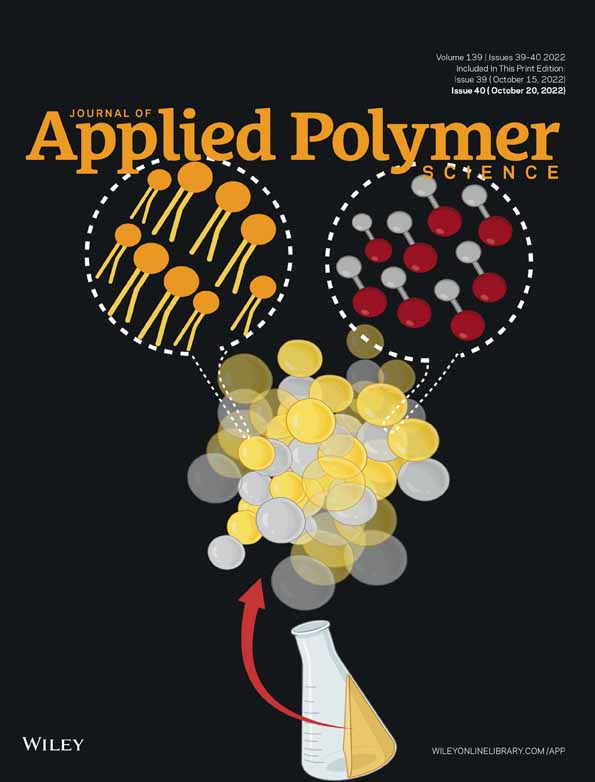Synergistic effect of silicon-containing groups on the self-healing performance of polyurethanes based on disulfide bonds
Funding information: Hunan Normal University
Abstract
Self-healing polyurethanes (PUs) with disulfide bonds and diphenyl silicon groups involved in the soft phases were prepared and studied in this work. The self-healing efficiencies of PUs are greatly improved by the synergistic effect of diphenyl silicon groups with low surface energy—increasing the distance between two polymer chains, enhancing the mobility of polymer chains, and promoting the migration of sulfur-containing groups to the damaged sites. The analysis of activation energy for the movement of polymer chains based on dynamic mechanical thermal analysis shows that, the higher contents of disulfide bonds and diphenyl silicon groups, the stronger mobility of polymer chains, and the higher self-healing performance of PUs. The study of temperature and time dependencies for the healing process at damaged sites indicates that it is composed of the recombination of disulfide bonds and the interpenetration and intertwining of polymer chains. The former can be completed in a shorter time, while the latter in a longer time. Sufficient time of heat treatment at relatively high temperature is necessary to get high self-healing efficiency. This strategy and the relative results are instructive to design and development of self-healing PUs.
CONFLICT OF INTEREST
The authors declare no potential conflict of interest.
Open Research
DATA AVAILABILITY STATEMENT
Research data are not shared.




